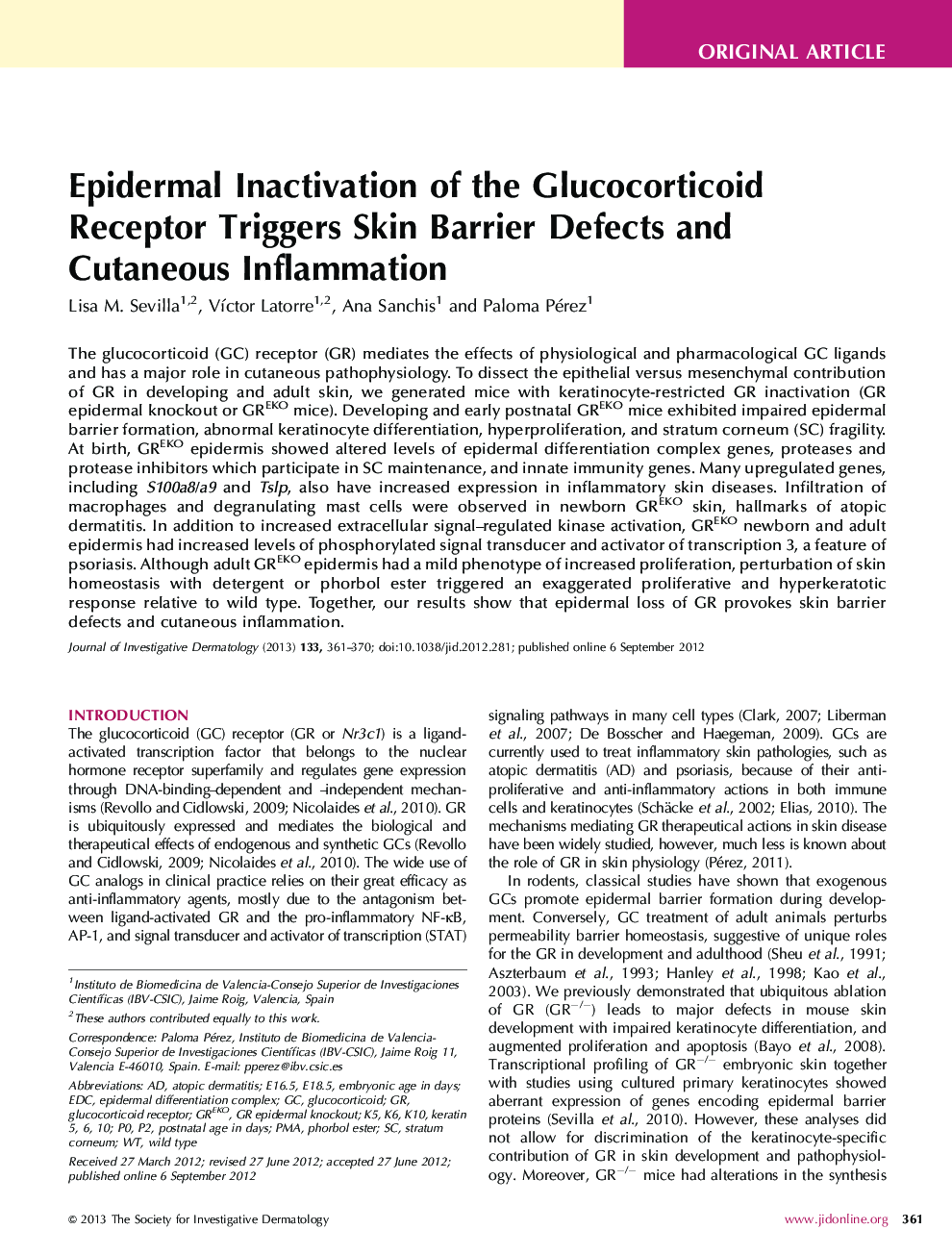| Article ID | Journal | Published Year | Pages | File Type |
|---|---|---|---|---|
| 6077964 | Journal of Investigative Dermatology | 2013 | 10 Pages |
Abstract
The glucocorticoid (GC) receptor (GR) mediates the effects of physiological and pharmacological GC ligands and has a major role in cutaneous pathophysiology. To dissect the epithelial versus mesenchymal contribution of GR in developing and adult skin, we generated mice with keratinocyte-restricted GR inactivation (GR epidermal knockout or GREKO mice). Developing and early postnatal GREKO mice exhibited impaired epidermal barrier formation, abnormal keratinocyte differentiation, hyperproliferation, and stratum corneum (SC) fragility. At birth, GREKO epidermis showed altered levels of epidermal differentiation complex genes, proteases and protease inhibitors which participate in SC maintenance, and innate immunity genes. Many upregulated genes, including S100a8/a9 and Tslp, also have increased expression in inflammatory skin diseases. Infiltration of macrophages and degranulating mast cells were observed in newborn GREKO skin, hallmarks of atopic dermatitis. In addition to increased extracellular signal-regulated kinase activation, GREKO newborn and adult epidermis had increased levels of phosphorylated signal transducer and activator of transcription 3, a feature of psoriasis. Although adult GREKO epidermis had a mild phenotype of increased proliferation, perturbation of skin homeostasis with detergent or phorbol ester triggered an exaggerated proliferative and hyperkeratotic response relative to wild type. Together, our results show that epidermal loss of GR provokes skin barrier defects and cutaneous inflammation.
Related Topics
Health Sciences
Medicine and Dentistry
Dermatology
Authors
Lisa M. Sevilla, VÃctor Latorre, Ana Sanchis, Paloma Pérez,
